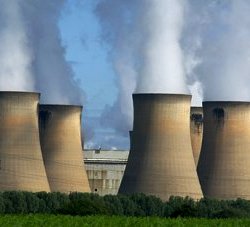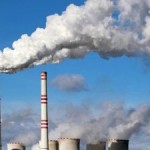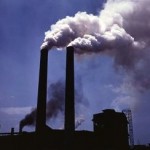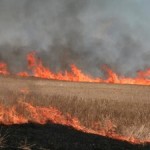 Geneva – The amount of greenhouse gases in the atmosphere reached a new record high in 2013, propelled by a surge in levels of carbon dioxide. This is according to the World Meteorological Organization’s annual Greenhouse Gas Bulletin, which injected even greater urgency into the need for concerted international action against accelerating and potentially devastating climate change.
Geneva – The amount of greenhouse gases in the atmosphere reached a new record high in 2013, propelled by a surge in levels of carbon dioxide. This is according to the World Meteorological Organization’s annual Greenhouse Gas Bulletin, which injected even greater urgency into the need for concerted international action against accelerating and potentially devastating climate change.
The Greenhouse Gas Bulletin showed that between 1990 and 2013 there was a 34% increase in radiative forcing – the warming effect on our climate – because of long-lived greenhouse gases such as carbon dioxide (CO2), methane and nitrous oxide.
In 2013, concentration of CO2 in the atmosphere was 142% of the pre-industrial era (1750), and of methane and nitrous oxide 253% and 121% respectively.
The observations from WMO’s Global Atmosphere Watch (GAW) network showed that CO2 levels increased more between 2012 and 2013 than during any other year since 1984. Preliminary data indicated that this was possibly related to reduced CO2 uptake by the earth’s biosphere in addition to the steadily increasing CO2 emissions.
The WMO Greenhouse Gas Bulletin reports on atmospheric concentrations – and not emissions – of greenhouse gases. Emissions represent what goes into the atmosphere. Concentrations represent what remains in the atmosphere after the complex system of interactions between the atmosphere, biosphere and the oceans. About a quarter of the total emissions are taken up by the oceans and another quarter by the biosphere, reducing in this way the amount of CO2 in the atmosphere.
The ocean cushions the increase in CO2 that would otherwise occur in the atmosphere, but with far-reaching impacts. The current rate of ocean acidification appears unprecedented at least over the last 300 million years, according to an analysis in the report.
“We know without any doubt that our climate is changing and our weather is becoming more extreme due to human activities such as the burning of fossil fuels,” said WMO Secretary-General Michel Jarraud.
“The Greenhouse Gas Bulletin shows that, far from falling, the concentration of carbon dioxide in the atmosphere actually increased last year at the fastest rate for nearly 30 years. We must reverse this trend by cutting emissions of CO2 and other greenhouse gases across the board,” he said. “We are running out of time.”
“Carbon dioxide remains in the atmosphere for many hundreds of years and in the ocean for even longer. Past, present and future CO2 emissions will have a cumulative impact on both global warming and ocean acidification. The laws of physics are non-negotiable,” said Mr. Jarraud.
“The Greenhouse Gas Bulletin provides a scientific base for decision-making. We have the knowledge and we have the tools for action to try keep temperature increases within 2°C to give our planet a chance and to give our children and grandchildren a future. Pleading ignorance can no longer be an excuse for not acting,” said Mr. Jarraud.
“The inclusion of a section on ocean acidification in this issue of WMO’s Greenhouse Gas Bulletin is appropriate and needed. It is high time the ocean, as the primary driver of the planet’s climate and attenuator of climate change, becomes a central part of climate change discussions,” said Wendy Watson-Wright, Executive Secretary of the Intergovernmental Oceanographic Commission of UNESCO.
“If global warming is not a strong enough reason to cut CO2 emissions, ocean acidification should be, since its effects are already being felt and will increase for many decades to come. I echo WMO Secretary General Jarraud’s concern – we ARE running out of time,” she said.
Atmospheric Concentrations
Carbon Dioxide
Carbon dioxide accounted for 80% of the 34% increase in radiative forcing by long-lived greenhouse gases from 1990 to 2013, according to the U.S. National Oceanic and Atmospheric Administration (NOAA) Annual Greenhouse Gas Index.
On the global scale, the amount of CO2 in the atmosphere reached 396.0 parts per million in 2013. The atmospheric increase of CO2 from 2012 to 2013 was 2.9 parts per million, which is the largest annual increase for the period 1984-2013. Concentrations of CO2 are subject to seasonal and regional fluctuations. At the current rate of increase, the global annual average CO2 concentration is set to cross the symbolic 400 parts per million threshold in 2015 or 2016.
Methane
Methane is the second most important long-lived greenhouse gas. Approximately 40% of methane is emitted into the atmosphere by natural sources (e.g., wetlands and termites), and about 60% comes from human activities like cattle breeding, rice agriculture, fossil fuel exploitation, landfills and biomass burning. Atmospheric methane reached a new high of about 1824 parts per billion (ppb) in 2013, due to increased emissions from anthropogenic sources. Since 2007, atmospheric methane has been increasing again after a temporary period of leveling-off.














